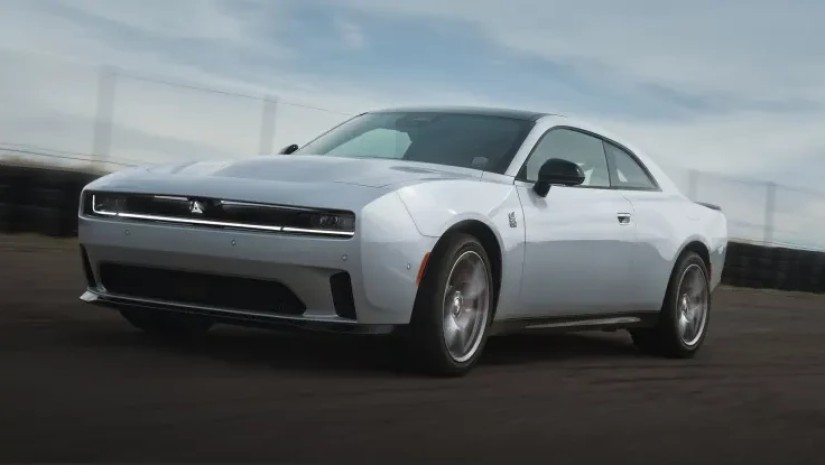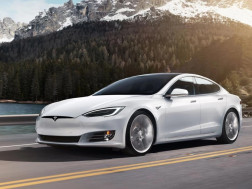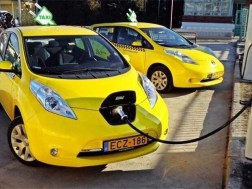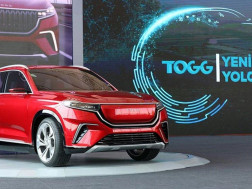Dodge won’t abandon its traditional, gearhead, high-octane Charger and Challenger owners with its next-generation muscle car.
The automaker on Tuesday revealed the new Dodge Charger as an all-electric vehicle as well as a next-generation gas-powered muscle car. It will be the first all-electric car from Dodge.
The traditional car has been in question since late 2022, when Dodge said production of the longstanding Charger and Challenger would be discontinued at the end of last year. At that time, the company said an EV would replace them, declining to discuss the potential for future gas models.
Offering EV and gas-powered versions of the vehicle will allow Dodge to be more flexible when it comes to production, as sales of all-electric vehicles have been growing more slowly than expected. More gas- and electric-powered Chargers, including a “Banshee” EV, will follow the initial vehicles.
Dodge CEO Tim Kuniskis called the EV a “game changer in the industry.” The new gas-powered models, meanwhile, will outperform their V-6 engine predecessors, as well as some of the V-8 variants.
“We’re taking the performance of the ‘golden age’ that you know today that you judge everything by and we’re taking the technology of the future to make sure [the Dodge brothers’] legacy doesn’t die,” Kuniskis said during a media briefing. “The Banshee is going to be our ultimate performer.”
Two- and four-door models
The 2024 Charger EV, known as the Daytona, is expected to go on sale this summer with up to 670 horsepower, 627 foot-pounds of peak torque and a 0-60 mph time of 3.3 seconds.
The two-door EV versions will be first, followed by four-door models during the first quarter of next year. The gas-powered Chargers with a new inline-six engine are expected to go on sale in 2025.
Pricing for the EV and gas-powered models will be announced closer to their production, Kuniskis said. Current starting prices for the Charger and Challenger gas models range between roughly $33,000 and $96,000.
Both the EV and gas models will eventually come in two- and four-door variants to replace the four-door Dodge Charger and two-door Challenger. That change is expected to reduce parts and costs — following a mandate from Carlos Tavares, CEO of Stellantis
, which owns Dodge, to his brand executives.
Dodge said all EV and gas models will share interior and exterior designs, which also should help with production complexity and lower costs.
When asked whether the EV will be profitable, Kuniskis reiterated comments made by Tavares that the company won’t sell electrified vehicles at a loss in order to boost sales or meet federal fuel economy standards.
As many brands in recent years switched to smaller and more fuel-efficient engines, Dodge rolled out Hellcat models and other high-performance vehicles. Such models helped generate attention for the brand but didn’t help the automaker’s carbon footprint, forcing it to buy carbon credits from automakers such as Tesla.
Stellantis’ “Dare Forward 2030” strategic plan includes moving toward electrified and more efficient propulsion systems, cutting its global carbon footprint by 50% by 2030 and leading the transportation industry by achieving net carbon zero by 2038.
Kuniskis said there are no plans for V-8 or plug-in hybrid electric models for the new Charger, which will be produced at a Stellantis assembly plant in Windsor, Ontario, in Canada.
Dodge Charger Daytona
The Charger Daytona EV will initially be offered in “R/T” and “Scat Pack” models with 496 horsepower and 670 horsepower, respectively. The ranges on a full charge are expected to be 317 miles for the R/T and 260 miles for the Scat Pack, Dodge said.
A feature called “PowerShot” will be standard on Charger Daytona models, delivering an additional 40 horsepower for 15 seconds when activated.
“We are going to displace superchargers and replace them with kilowatts and PowerShots,” Kuniskis said.
The design of the new Charger is heavily based on a concept car Dodge revealed in August 2022. It is a modern, yet retro, version of the current Dodge Challenger with a more aerodynamic design that’s still muscular. Most notably, the front end features a large opening for air to pass through, which the company is calling an “R-Wing.”
Kuniskis said the concept car was the “production car hiding in plain sight” in an attempt to get customers used to the new design.
Dodge is still working on how the EV will sound, Kuniskis said. The goal is to attempt to retain the roaring sound and driving characteristics of Dodge’s current gas-powered Charger and Challenger.
While EVs can be fast, with a “linear acceleration” that produces astonishing 0-60 mph times, they often lack the driving dynamics that many performance car owners enjoy. It’s a problem auto executives have privately been attempting to solve as the industry transitions to EVs.
The gas-powered Charger will be powered by a 3.0-liter twin turbo “Hurricane” inline six-cylinder engine that powers other Stellantis vehicles such as the Jeep Wagoneer and Ram 1500.
The only difference in the EVs and gas vehicles could be the use of a “Fratzog” split deltoid logo for EVs rather than Dodge’s current dual racing stripes. Kuniskis said the company is still determining whether to use the Fratzog — a made-up word initially used by Dodge from 1962 through 1976 — for the gas models.
Source: CNBC
















